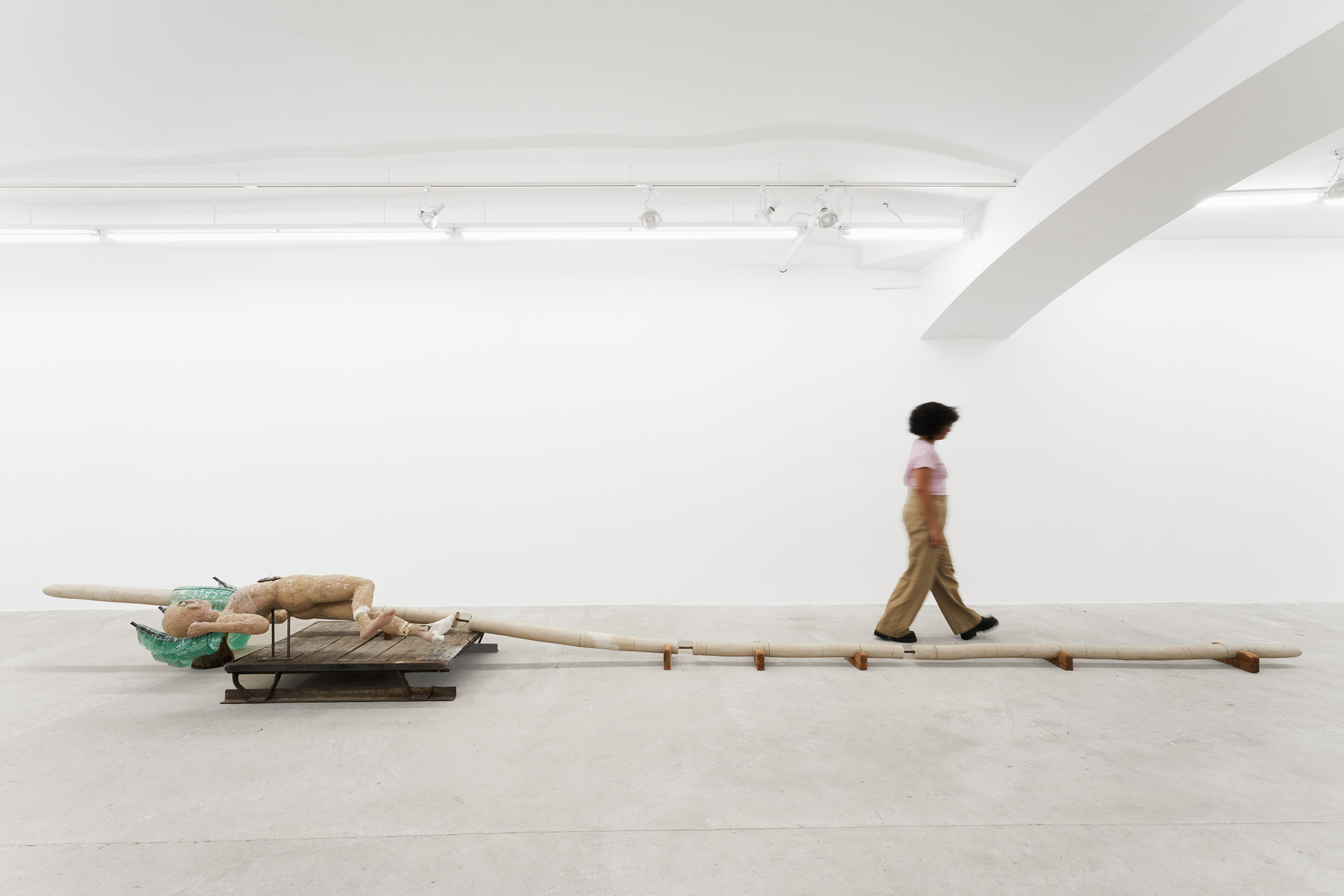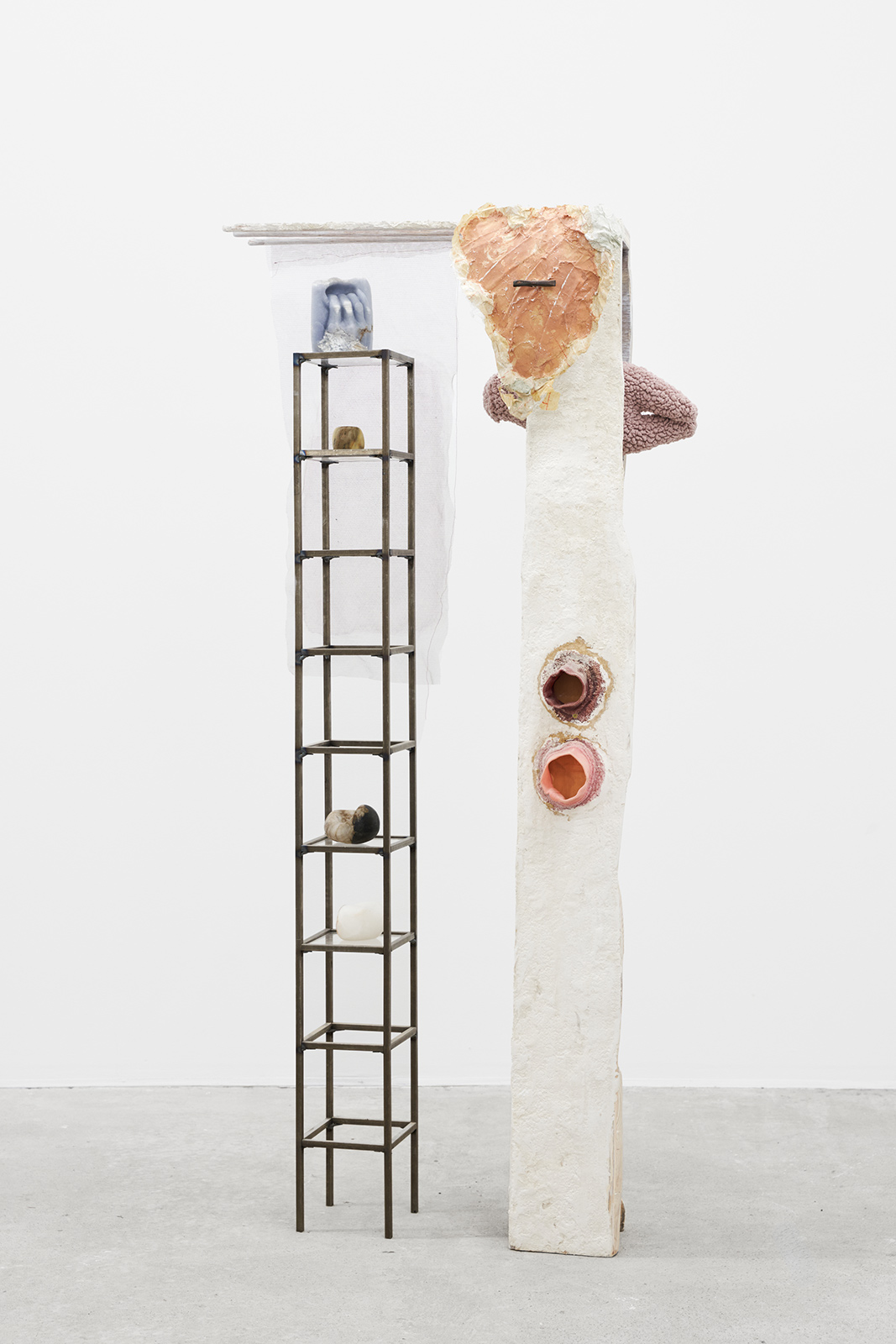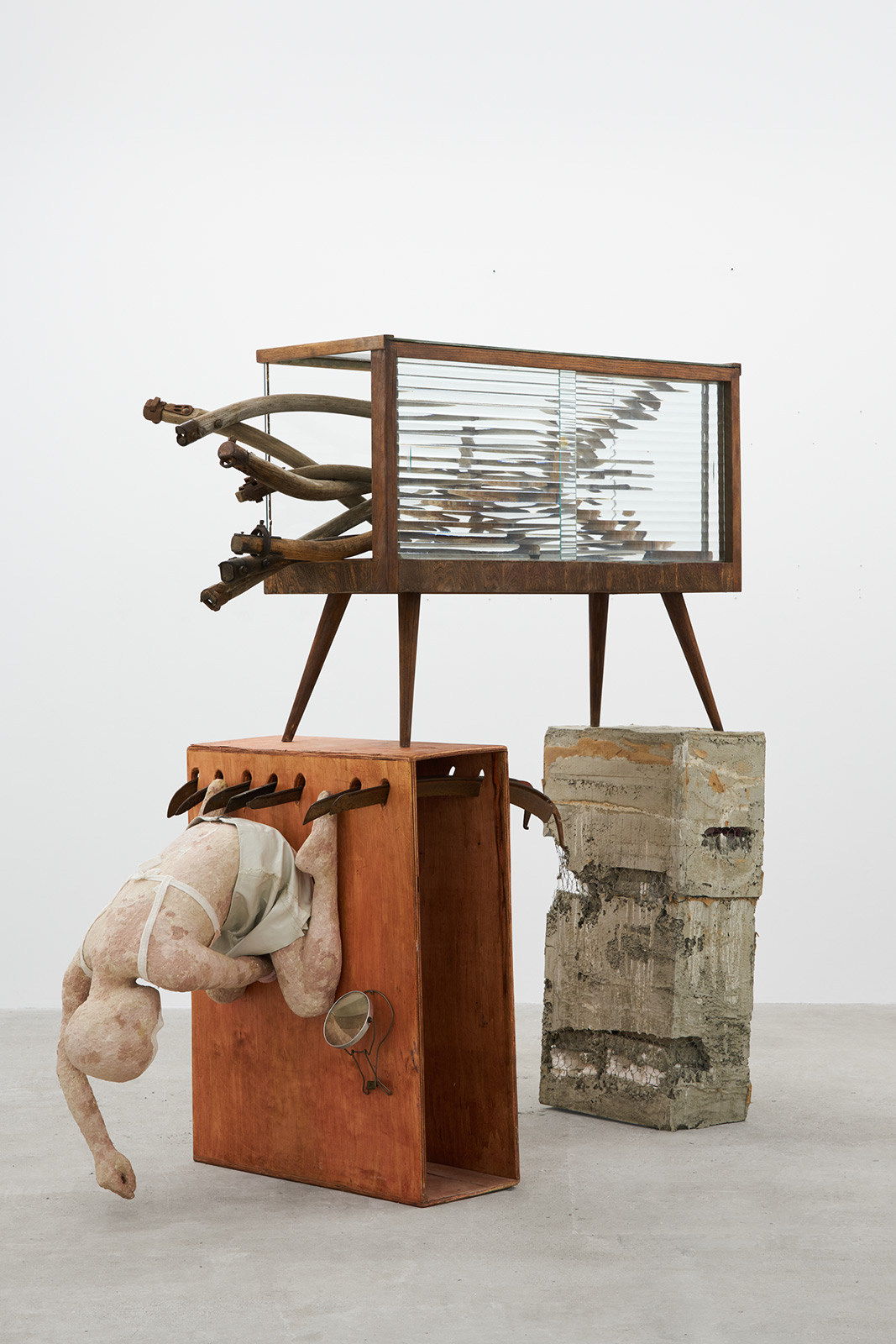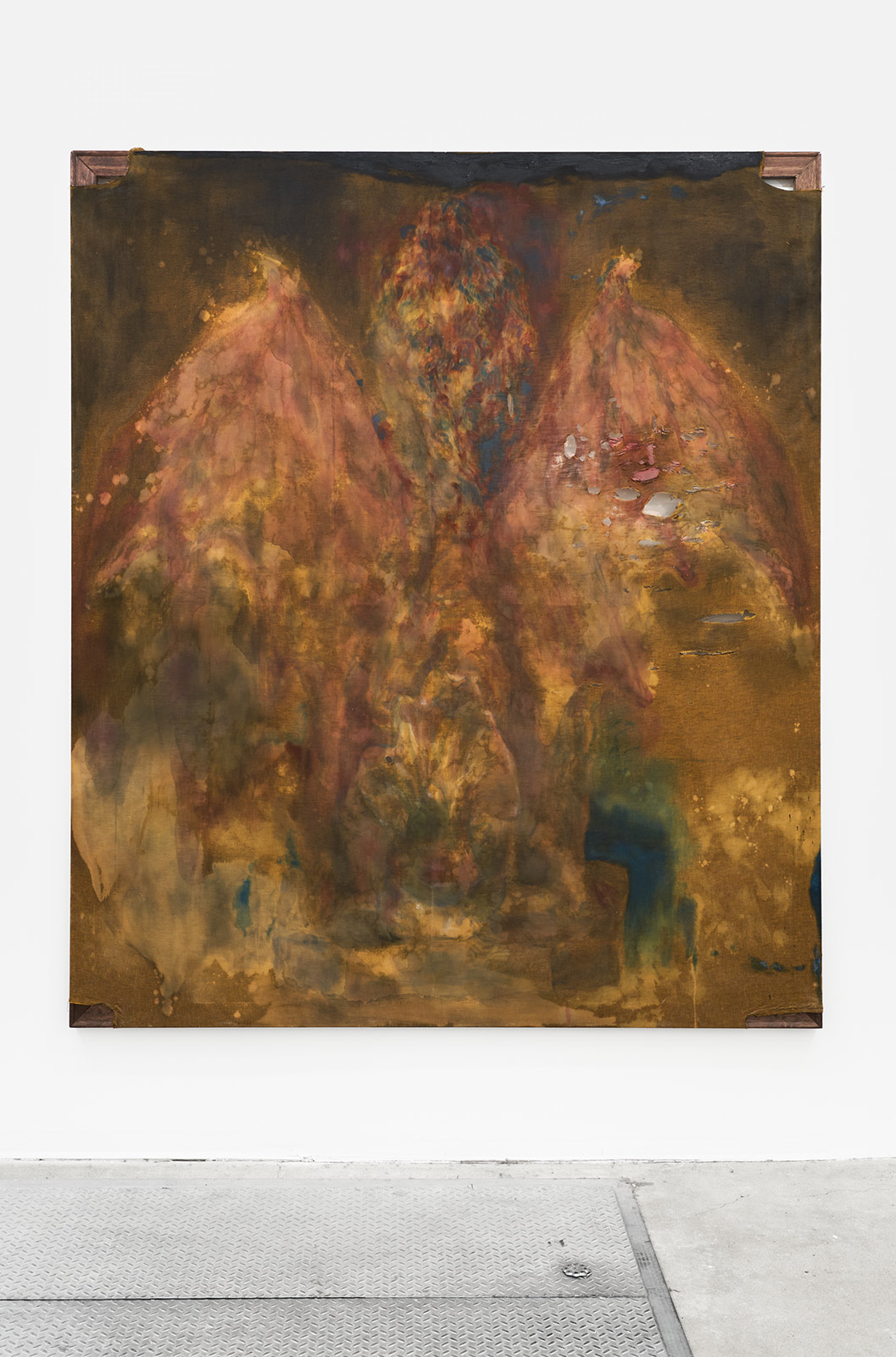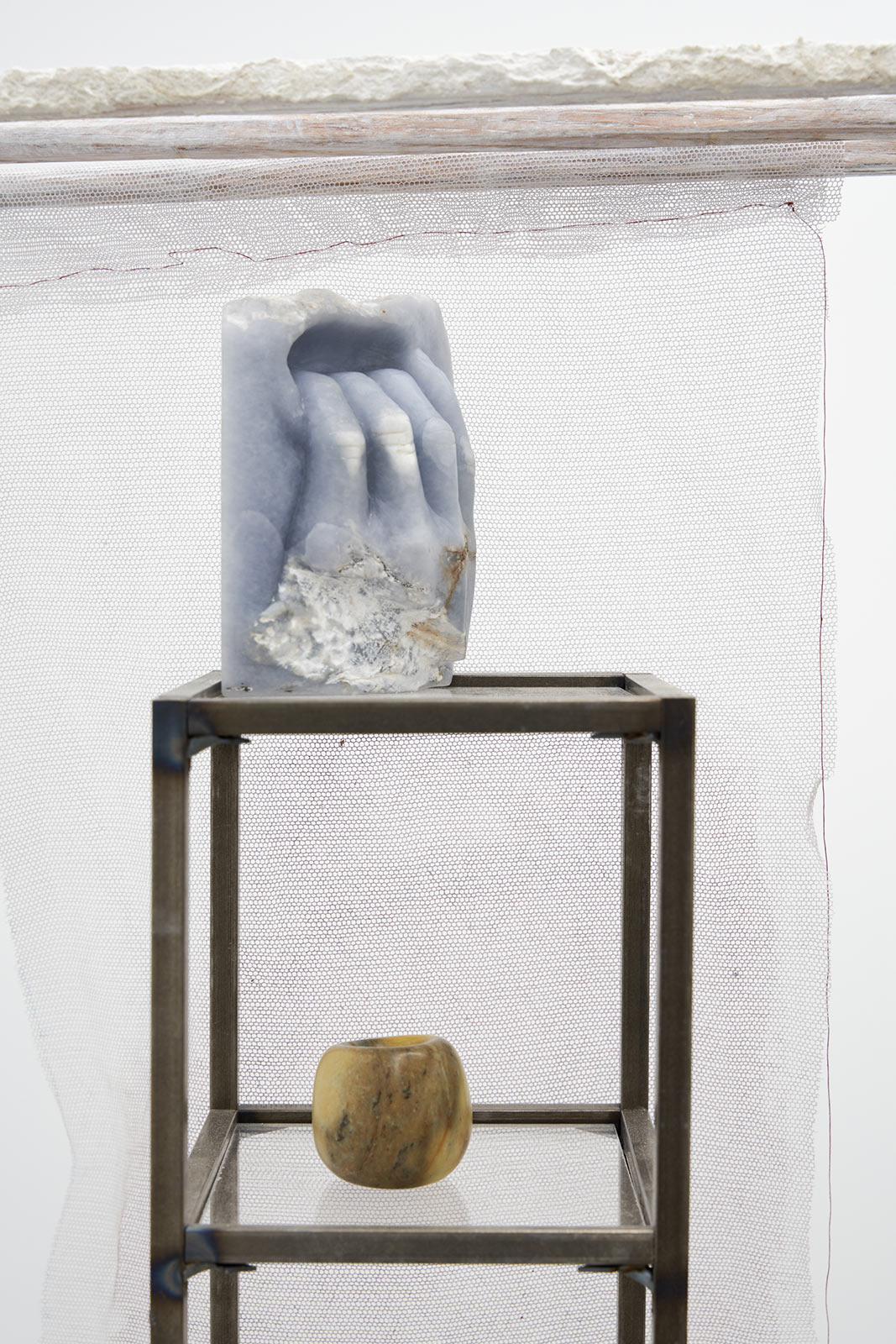Currently on view at Lyles and King, the sculptor’s latest show references everything from fox spirits to early 17th-century bridles in an installation as ethereal as it is corrosive
Too many galleries are focused on exhibiting the kind of pop images that belong on skincare packaging or ads on the subway. Across the downtown art scene, few names stand out among the throngs of hyperrealist capitalist detritus and Keith Haring wannabes. Many artists seek to monetize their identity vis-à-vis paintings of Grindr screenshots or moody grayscale self-portraits. However, some choose a more opaque route. A slew of sculptors like Jordan Loeppky-Kolesnik, Ser Serpas, Kiyan Williams, Coco Klockner, and Kaur Alia Ahmed are leaning into defiant abstraction. Their objections sever our concepts of form and function; there’s a menacingly playful quality to their work even as the viewer struggles to decode the message. Their full meaning lies on a horizon just beyond our reach even as a certain affect bubbles up. There’s something queer about this approach to illegibility. Catalina Ouyang’s bewitching exhibit Trick at Lyles & King is certainly a wicked example of this enigmatic beauty. It’s nice to see a show take risks, even if the hits don’t always quite connect.
The ambience of Ouyang’s work is sinister. Monsters, ghosts, and bizarre furniture adorn the gallery, repelling and inviting us in equal measure. Two large paintings—one on linen, one on a linen bedsheet—anchor each side of the room while smaller pieces run along the walls. The rest of the space is covered with large sculptures. Cinder blocks connect pipelines to strange misshapen bodies. One humanoid figure has fallen over, as if doubled over in pain, another tries to escape a box stuffed with knives. A large, elongated red organ stuffs itself into a high heel.
Similar to how Sarah Lucas arranges her sack-like figures, Ouyang plays with their characters: they perch on chairs, project colorful slides, erect shelves, hunch over next to pieces of wood. “I want my work to be both the mother and the monster. It’s not even a contradiction. I want my work to be able to hold that complexity,” Ouyang once said. Limbs like wooden appendages sit on and betwixt wood and stone.
A glimmering rainbow of jewel tones shimmers behind a veil of navy across Ouyang’s paintings, which ring the sculptures. Their mythological portraits reference Sphinxes, Sarah Bernhardt, Roman ruins, and Catherine Breillat film stills. Elsewhere, they’ve painted tiny blocks to look like currency. The show references the destruction of Pompeii both in the press release and in its ruinous archaeological aesthetic. Value, want, desire, and hope remain even after the ancient city’s annihilation. Is money worth anything in a world on fire? What if yes, fleetingly, somehow, anyway?
Ouyang realized one of their larger paintings on a bedsheet, furthering the helter-skelter aesthetic narrative of the show. This painting and a twin-like image on either side of the gallery are some of the show’s most beautiful—abstract portraits of winged creatures seen through a maelstrom of ruddy browns, blues, and flickering oranges. Ouyang spins many plates in Trick and their varied pieces don’t always cohere into a singular story. This doesn’t necessarily take away from the intrigue; the viewer must simply take stock of the artist’s vast array. Some of Ouyang’s past shows have been more immediately striking—in part for their referencing the artist’s own experiences more clearly, whether in the form of adolescent imagery from DeviantArt or sculptures skewering abusive ex-lovers and white male allies. But parsing that more biographical work for psychology would be its own trap. “Nothing about this is special or illuminating, you can read anything that Jenny Zhang has written about growing up Chinese-American,” Ouyang said in a 2018 interview, referring to the popular poet, essayist, and author of the story collection Sour Heart. With Trick, they take a more corrosive, ethereal approach. By withholding any distinctive subject, their work takes on an allegorical quality, like a spectral fairy tale.
The myths of civilization loom large in this work, from Remus and Romulus to fox spirits. In a small courtyard outside the main gallery, Brank stands out for its sheer size. An intimidatingly massive black metal sculpture with a wide ring serving as the base shooting two arms that link the air. The machine dates back to the early 17th century and references a scold’s bridle, a tool meant to punish those who speak out of turn, injuring the speaker whenever they attempted speech. In essence, a gendered weapon meant to silence women’s idle chitchat. The piece will be activated by group readings, shifting the disturbing silence into a poet’s paradise. One can’t help but imagine the words they speak will be ephemeral, opaque, and fleeting—challenging the desire for narrative just as Ouyang does.


